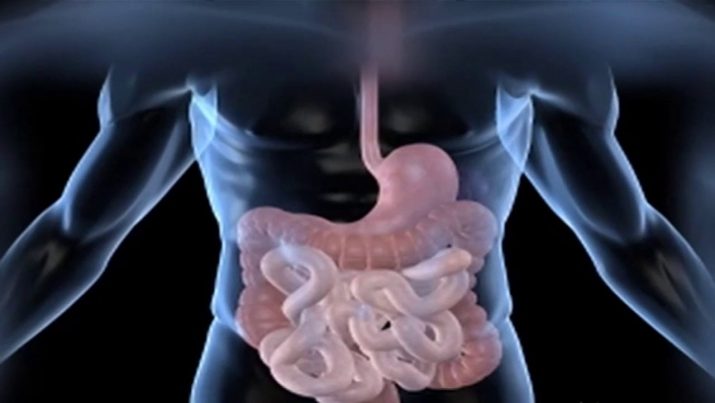
Colon Polyps – causes, side effects and treatments at NaturalPedia.com
Thursday, February 22, 2018 by Ralph Flores
http://www.naturalpedia.com/colon-polyps-causes-side-effects-and-treatments-at-naturalpedia-com.html

A polyp is defined as extraneous tissue growth inside the body. That said, colon polyps (which also go by colonic polyps, bowel polyps) are tissue growths that are found in the lining of your colon and rectum. While most colon polyps are benign, some polyps may develop into colon cancer, which is life-threatening once diagnosed in its later stages.
Having colon polyps are common, especially in older adults. In the U.S., the National Institute of Diabetes and Digestive and Kidney Diseases estimates that up to 40 percent of adults may have it, while one in four people develop colon polyps at some point in their lives in the U.K., according to the National Health Service.
Colon polyps are made up of three groups – hyperplastic polyps, adenomas, and polyposis syndromes.
- Hyperplastic polyps – These are the most common types of colon polyps, and they occur in the rectosigmoid junction (the area between the sigmoid colon and the rectum) during adulthood. While these were initially deemed clinically insignificant, hyperplastic polyps are now identified to have malignant properties, especially in the setting of hyperplastic polyposis syndrome.
- Adenomas – These polyps are less than 1 cm in diameter, and are mostly benign. However, at least 10 percent of adenomas are larger than 1 cm and have a small chance of developing into cancer. Adenomas appear in two forms – pedunculated (those that hang with stalk) and sessile (those that do not have a stalk), which are more likely to develop into malignant cells.
- Polyposis syndromes – These are conditions that are passed down from parent to child that contribute to the development of colon polyps later in life.

Known risk factors and symptoms of colon polyps
While the etiology of colon polyps is not clear, experts have identified some risk factors that increase the likelihood of developing the condition.
- Age – Colon polyps are common in people over 50 years old.
- Family history – Having someone in the family with a history of colon polyps or colon cancer may increase a person’s chances of getting one later on. The same is applicable for people who have a history of ovarian or uterine cancer.
- Lifestyle – A person who smokes regularly, drinks alcoholic beverages, does not exercise, and is overweight has an increased likelihood of getting colon polyps.
- Pre-existing condition – People who have inflammatory bowel diseases (IBD) such as ulcerative colitis or Crohn’s disease are at risk of getting colon polyps in the future.
Colon polyps are asymptomatic. However, when they do cause symptoms, it will include any of the following.
- Bleeding from the rectum
- Anemia (a condition where the blood does not have sufficient red blood cells)
- Diarrhea or constipation
- Decreased stool size
- Iron deficiency
- Black or tar-colored stools
- Abdominal pain
- Nausea or vomiting
While most colon polyps are benign, untreated polyps may lead to colon cancer in the future.
Body systems affected by colon polyps
Colon polyps, as the name implies, affect the colon and the rectum.
Food items or nutrients that may prevent or relieve colon polyps
Maintaining a proper diet is already winning half the war against colon polyps. Here are some recommendations to help stave off the condition.
- Eating foods that contain high levels of curcumin and quercetin can inhibit the development of colon polyps. You can find these bioactive ingredients in turmerics and onions, respectively.
- Reducing fat intake, especially from meat and other animal sources, can reduce a person’s chances of having colon polyps, as well as cancer. Opt for fatty fish, nuts, and oils instead.
- Basking in the sun is one of the main methods to get vitamin D, which can aid in preventing polyp growth.
- Having the proper ration of magnesium and calcium ensures the body can protect itself against the development of polyps in the colon.
- Broccoli and other cruciferous vegetables contain sulforaphane, a compound that offers protection in the intestines and inhibits the formation of colon polyps.
Of course, limiting alcohol consumption, a healthy diet of fruits and vegetables, quitting smoking, and an active lifestyle also plays a big part in maintaining a healthy body to defend against colon polyps.
Treatment and management options for colon polyps
The usual treatment for colon polyps is excision. A medical health profession will do this procedure during a colonoscopy or a flexible sigmoidoscopy. The removed polyps will then be tested to check for cancer.
When a person is has been diagnosed with colon polyps, he will be asked to get tested regularly to detect if there are more polyps that were formed.
Where to learn more
- Dr Oz colon polyps raises question of “spontaneous disease” without cause
- Daily calcium supplements can help prevent colon polyps, study suggests
- Curry, onions found to protect against colon cancer
- Cows for breakfast
- Beans do more than give you gas
Summary
Colon polyps are tissue growths that are found in the lining of your colon and rectum. While most colon polyps are benign, some polyps may develop into colon cancer, which is life-threatening once diagnosed in its later stages.
Colon polyps are made up of three groups – hyperplastic polyps, adenomas, and polyposis syndromes.
While the etiology of colon polyps is not clear, experts have identified some risk factors that increase the likelihood of developing the condition.
Limiting alcohol consumption, a healthy diet of fruits and vegetables, quitting smoking, and an active lifestyle also plays a big part in maintaining a healthy body to defend against colon polyps.
When a person is has been diagnosed with colon polyps, he will be asked to get tested regularly to detect if there are more polyps that were formed.
Sources include:
Tagged Under: Tags: colon polyps





